Tag Archives: moto 360
The Moto 360 smartwatch is back, but Motorola isn’t making it
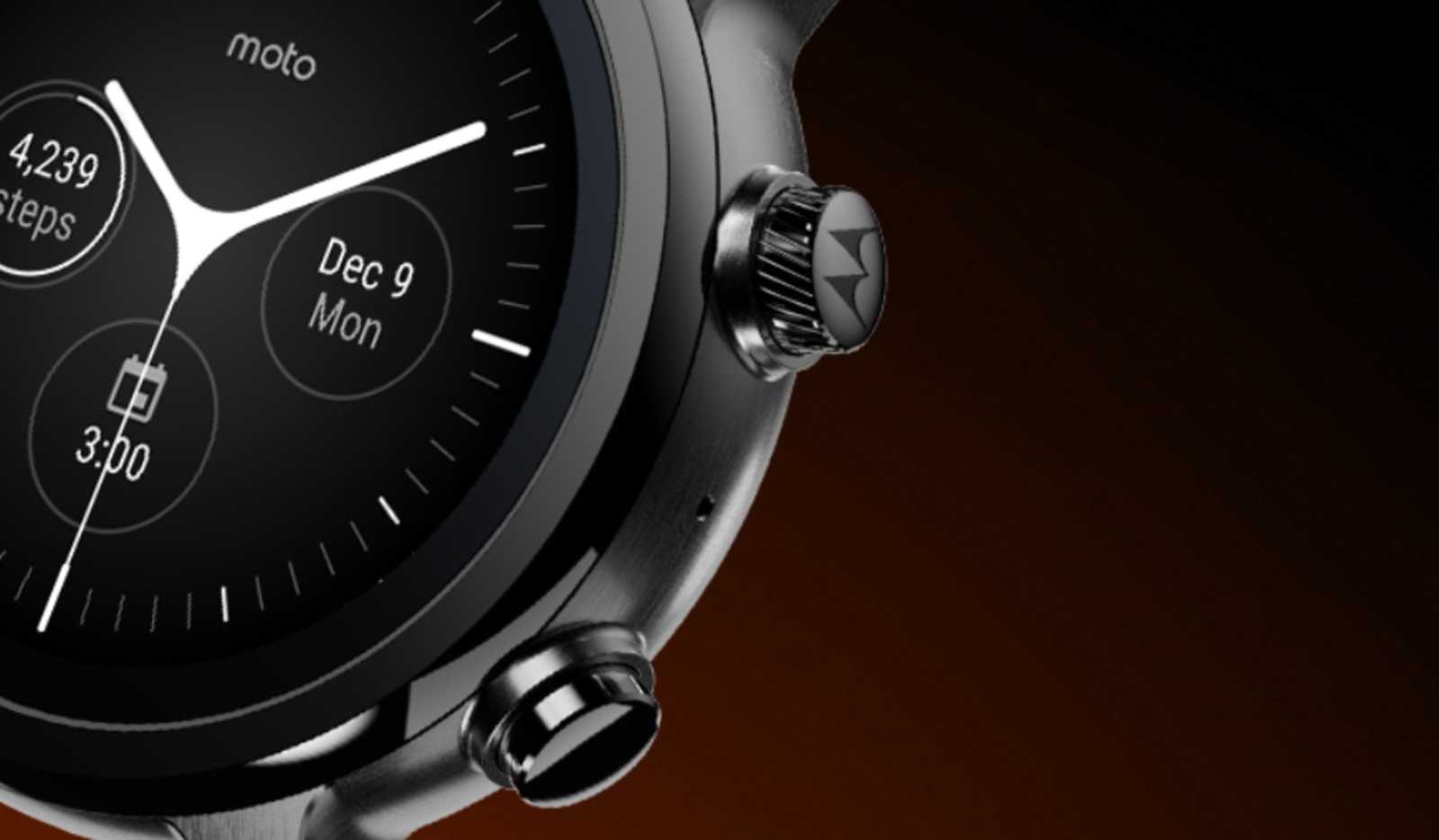 The original Moto 360 was one of the most attractive smartwatches around when it launched way back in 2015. As the first round Android Wear watch, it made a huge impression with slick-looking wearables fans despite some hiccups at launch, but as with...
The original Moto 360 was one of the most attractive smartwatches around when it launched way back in 2015. As the first round Android Wear watch, it made a huge impression with slick-looking wearables fans despite some hiccups at launch, but as with...
Second generation Moto 360 to be introduced at Google I/O 2015

A new wave of rumors suggest that the Google I/O 2015 might not only see the introduction of the new Android M, but also the second generation Moto 360.
The 28th of May is the confirmed date for the Google I/O 2015, a tech conference from Google and partners which seems to be getting things ready for the introduction of Android M, the next big update for Android systems. Yet, that is not all that is scheduled, as certain sources hint at the possibility of the next Moto 360 being introduced in it. This data comes from a Bluetooth certification with a serial code that is surprisingly close to that of the original model – the original Moto 360 was codenamed BTMW01, whereas other sources report a rather similar BTMW03.
There isn’t a lot of data available, but speculation is rampant: apparently, Motorola’s new smartwatches would sport a small screen with a 360×360 resolution, ARM V7 CPU, and is codenamed “Smelt”, running a Android 5.1 Lolipop variation. Truth is, there were also some images shared by the Lenovo team, which suggest the possibility of two screens, not unlike what the Apple Watch does, but this is far from confirmed – for now, all we can do is wait and see.
Be social! Follow Walyou on Facebook and Twitter, and read more related stories at Best Buy Admits that It Leaked Moto 360 Specs by Mistake and MobileFun Leaks Moto 360’s Price, Surprises Us Pleasantly.
Second generation Moto 360 to be introduced at Google I/O 2015

A new wave of rumors suggest that the Google I/O 2015 might not only see the introduction of the new Android M, but also the second generation Moto 360.
The 28th of May is the confirmed date for the Google I/O 2015, a tech conference from Google and partners which seems to be getting things ready for the introduction of Android M, the next big update for Android systems. Yet, that is not all that is scheduled, as certain sources hint at the possibility of the next Moto 360 being introduced in it. This data comes from a Bluetooth certification with a serial code that is surprisingly close to that of the original model – the original Moto 360 was codenamed BTMW01, whereas other sources report a rather similar BTMW03.
There isn’t a lot of data available, but speculation is rampant: apparently, Motorola’s new smartwatches would sport a small screen with a 360×360 resolution, ARM V7 CPU, and is codenamed “Smelt”, running a Android 5.1 Lolipop variation. Truth is, there were also some images shared by the Lenovo team, which suggest the possibility of two screens, not unlike what the Apple Watch does, but this is far from confirmed – for now, all we can do is wait and see.
Be social! Follow Walyou on Facebook and Twitter, and read more related stories at Best Buy Admits that It Leaked Moto 360 Specs by Mistake and MobileFun Leaks Moto 360’s Price, Surprises Us Pleasantly.
Metal Gear Solid Codec Smartwatch Face: Moto 360 by Mei Ling
I don’t think smartwatches are as useful as they’re cracked up to be, but I also didn’t expect that they could be another way to express one’s geekiness. That’s all thanks to user made skins for Android watches, like njdom24’s sweet Codec skin. Here’s the skin on Skittleguy’s Moto 360.
I miss the Select button. Call Otacon and download the skin on FaceRepo.
[via Skittleguy via Destructoid]
Best Buy Admits that It Leaked Moto 360 Specs by Mistake

The American e-tailer confirms that the previous leak of the Moto 360 smartwatch was just an accident. Since everyone else was trying to keep things secret until the official launch, it would seem that Best Buy spilled the beans.
Moto 360 is the third smartwatch running Android Wear, Google’s version of its mobile OS that’s tailored for wearables. As it has yet to be officially launched, it’s the most anticipated of the series, and its design must have contributed to that a lot. While most smartwatches come with a rectangular face, Moto 360 took the classic route and packs all of its hardware in a round case.
A couple of weeks ago, @evleaks showcased some of the most recent renderings of the Moto 360 smartwatch, in what was to be one of his last contributions to the world of leaked images. This weekend, however, Best Buy made public the specs of the device, and today admitted that it all was a mistake. That’s definitely the case, as the watch is supposed to be launched on September 4, at an event organized by Motorola.
Sporting a 1.5-inch backlit LCD display screen, Moto 360 is said to come with voice-activation abilities and Wi-Fi, something that’s not present in the other two Android Wear smartwatches. It will be compatible with smartphones and tablets running Android 4.3 or newer.
According to Best Buy’s leaked specs (which have obviously been removed in the meantime), Moto 360 will be available in two colors, namely black and gray. The non-metal wristband may make it look cheap, and a lot of people complain about it being too thick, but it remains to be seen how the smartwatch looks in real life before judging it.
One of its main strong points is the price of only $250, a lot less than both the Samsung and the LG Android Wear watches. Most would claim that Motorola is a bit late to the Android Wear game, and that the users of the Moto 360 smartwatch aren’t early adopters of the latest tech, unlike the owners of LG or Samsung Android Wear smartwatches. Still, its shape and UI make it a more attractive option, and the enthusiasm of geeks whenever photos or specs of it are leaked can only confirm that.
As Sherlock would say, the game will be on by the time Apple decides to launch its smartwatch into the world, so the Cupertino company had better come with something truly revolutionary. I kind of doubt that, however.
Be social! Follow Walyou on Facebook and Twitter, and read more related stories about the MobileFun leak of Moto 360′s price, and Samsung’s standalone smartwatch.
Google I/O Brings Amazing New Google Updates
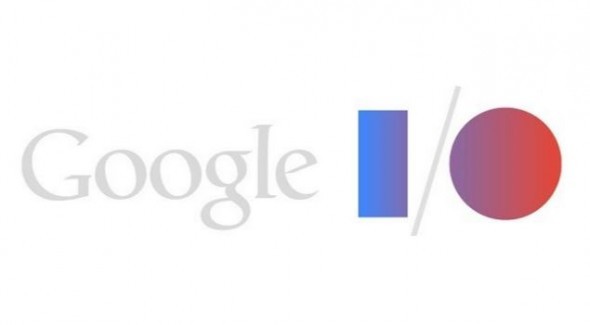
It seems like it’s been months in the making, but Google I/O is already here with all its beautiful Googley announcements.
This year’s Google I/O is the biggest yet, and not just because the keynote lasted for 2 1/2 hours, but because of the global significance of Android. Sundar Pichai opened the Google I/O keynote remarking that Android has over 1 billion active users, which is double the number at this time last year. Android users sent sent over 20 billion texts, took over 93 million selfies, and 1.5 trillion steps last year, and Android tablets now own a 62% tablet market share, which is also almost double from last year.
We’ve been anticipating Google I/O for some time, and saw quite a few things marked off our list of expected announcements, plus some unexpected changes that have some pretty broad sweeping effects for all Google users.
Android L
First comes Android L. Normally, each Android iteration is named after some sort of sweet (the expected name this time around was “Lollipop”), but this year, it was referred to simply as “Android L.”
This update covers several areas of hardware and software, starting with Android One. Android One is an Android device reference platform intended for emerging markets. Google has set serveral turn key standards for pre-approved hardware so that manufacturers can easily design smartphones for under $100. Android L is a strong part of this, because it functions very well with budget friendly hardware.
Design has been a big component of Android’s innovation in the past several years, and this year, Matias Duarte unveiled Material Design. This new design standard flattens and simplifies UI layers while simultaneously adding layer dimensions and shading using artificial light sources, creating an illusion of depth to clearly separate independent UI elements. The intent behind this is to represent a user experience similar to that of physical paper and ink. Material design extends beyond phone form factors and is intended to also work for tablets, laptops, wearables, and any other screen type in use.
Lock screen notifications have also been drastically improved, displaying notification cards directly on the lock screen with additional gesture based options to be able to interact with or dismiss each notification. Notifications function using a card UI that stacks each notification “card” on top of each other, with cards from like apps being grouped together.
Speaking of the lock screen, Google has now baked in contextual lock screen controls similar to Motorola’s Trusted Device feature of Pebble’s Pebble Locker, where the phone will automatically unlock based on a bluetooth or WiFi connection, or if it is in a certain geolocation. This way, your phone can know you are the one using it and turn off the lock screen under specific circumstances.
Android L also replaces the Dalvik runtime with the Android Run Time, or ART. It gets a bit technical, but what you need to know is that ART effectively doubles the performance for all apps as well as provides cross platform support for ARM, x86, and MIPS processors (including 64-bit support), meaning Android L can run on just about any hardware, including laptops and desktops.
ART also provides massive increases in graphical performance, working to close the gap between mobile and desktop graphics. Obviously, the hardware in use is very relevant, as higher end devices will be required for higher end graphics, but a demo using the Unreal Engine 4 was show as an example of the graphical capabilities of Android L, given powerful enough hardware.
Of course, when you have more powerful hardware, you need the battery life to properly support it. This is where Google brought in Project Volta. Volta is an initiative to leverage Android’s software to improve efficiencies and stretch out battery life.
The first key component is Battery Historian. Android already has battery statistic, but those are basically broken down by application, meaning the battery is often taken up by something like “Android system,” which is not very helpful information. Battery Historian will determine if the battery sucking came from background data, bluetooth connections, 3G/4G radios, and etc. It provides a very granular view of battery usage so you can adjust accordingly.
The second component of Project Volta is Battery saver. Battery saver is pretty self explanatory. It strategically adjusts phone usage in order to reduce battery suck. Google claims that it increased battery on the Nexus 5 by 90%. The Nexus 5 isn’t exactly known for its stellar battery life, so we’ll see some more real world numbers once Android L is on more devices.
A couple years ago, Google spun of a chunk of core Android features into Google Play Services, which allows parts of Android to be updated without actual Android version updates being submitted. Android critics always cite the slow adoption of new Android versions as a major flaw of the operating system, but the real signifiant number to pay attention to is adoption rate of the newest Google Play Services Framework, which Google claims is at a whopping 93% (of the over a billion active Android devices).
Google Play Services improvements this year focused mostly on security improvements. GPS now includes privacy controls and a kill switch to protect data in case of theft. Malware scans are also performed by GPS and not exclusively for Google approved apps from the Google Play store, but also for side-loaded (and therefore unapproved) apps.
Not all apps have to be downloaded and installed in order to be run, though. Mobile Web is another major focus of Google. Material Design has been expanded to cover Google’s mobile web standards, which allows for immersive apps that mimic the Android user experience at a full 60 frames per second.
With Chrome for mobile used by up to 300 million users (up 27 million this year), the mobile web experience is one in the same as the Android experience. In addition to enabling web pages to share the same UI, some apps will be available to be accessed within web links, just like was rumored to be available from Project Hera.
In addition to the Android integration into the web experience, the web experience is also being brought into Android. Google’s traditional multi tasking card view will now display individual Chrome mobile tabs as their own individual cards within Android, so any web apps that use Material Design will be almost indistinguishable from Android apps when in card view.
Android L developer preview is available now for the Nexus 5 and the Nexus 7. The official release will likely be later this summer along with 5,000 new APIs. Most major devices will be seeing Android L within 90 days due to the new Google Mobile Certification Standards.
Google’s wearable solution, Android Wear was one of the most anticipated announcements. Although there wasn’t much new announced over what we already knew, the device demo alone was worth watching. Google designed Android Wear to be a contextually aware, seamless mobile experience that is mobile first. It supports both square and circular displays, but only the LG G watch and the Samsung Gear Live have gone live. The circular Moto 360 will be available later this summer, but the little we saw was gorgeous.
David Burke, Google’s Engineering Director, says the average user checks their phone 125 times every day, which is evidence enough of the benefit provided by a smartwatch. The display will always be on (in some capacity), but come to life in full vivid color when interacted with.
Android Wear devices are gesture controlled and completely synced with a user’s Android notifications, most significantly, Google Now notifications. Functionality will only improve with time, but one cool feature shown off was the ability for a user to say “Ok, Google. Call me a car” to automatically summon a car from the Lyft taxi service.
All Android wear devices will be water resistant and will be cross platform (that means iOS support). The Samsung Gear Live and LG G Watch are both available now in the Google Play device store, with the Motorola Moto 360 coming “later this summer.
Google expanded wearable support even more with the announcement of Google Fit, a common platform for developers of fitness and health applications. Nike, Addidas, and Withings are already supported, but even more will come now that that SDK is available to developers.
After Android Wear came the Android Auto announcement. Android’s Director of Engineering, Patrick Brandy, departed from the normal approach to gadget use in the car by acknowledging that users want to use their devices behind the wheel and that it was important to find a safe way to enable gadget use instead of just outright restricting it.
Android Auto will be available with over 40 auto partners as a part of the Open Automotive Alliance and will give quick, glanceable, access to core messaging, music, and navigation features. Google is even making the SDK available so it can support any 3rd party music and messaging apps.
Google officially announced the long coming Android TV, which provides complete aggregation for any streaming video service in addition to broadcast or cable television. On top of video, it also supports many Android apps and games, including gamepad support. With the improved graphics available in Android L, Google TV could provide a reasonable console alternative for many casual gamers. It already has full support for the entire Gameloft library.
Google TV also supports Google Cast, which allows it to function like a Chromecast when necessary, so video streaming can be initiated from your mobile device or chrome browser. Google search is built in, meaning Google Now support and the ability to search for movies by voice, referencing specific movie characteristics, such as a specific actor, or something like “show me all the best picture nominations from 2007.”
For anyone that doesn’t want to spring for a full Google TV solution, Google’s Chromecast is one of the hottest selling electronics in multiple countries and has some improved features as well. Backdrop now allows users to customize the screen saver features when content is not actively displaying, such as showing pre-set art, or even user images.
Traditionally, Chromecast requires a user’s device to be connected to the same WiFi SSID in order to cast any content to it, but it now supports casting by anyone, regardless of network, making it easier for house guests to stream media without having access to your home network. Device mirroring is also enabled, which was also conspicuously missing from Chromecast up to this point.
Google Play Games also recieved a big update, which will likely bolster its functionality with Google TV. User profiles are now heavily tied in to in-game achievements, meaning your user profile will change to reflect what games you play and how you play them. Quests have also been added, meaning game makers can enable time based events for players to participate in without having to download and install any game updates.
The other big improvement is better live multiplayer. This was demonstrated on stage between Android TV with a gamepad for one player with the other player on a tablet with touch screen controls. It looked fairly smooth, but only hands on time will show how the experience truly plays out.
Last year, google payed out $5 billion to game developers. That’s 250% the payout from the previous year. This is huge new, and will likely attract more developers to start working on Android. With the graphical improvements with Android L and the quasi game console enabled through Android TV, expect some hardcore game development to come to Google over the next year.
It has been rumored for some time that Android would be gaining additional security and enterprise support, and Google came through. Android will natively support a dual personality containerization solution that sounds a lot like it baked in its recent purchase, Divide, right into Android. Native support for Samsung Knox is also available, meaning many enterprise employees are enabled to use their phone for both work and personal if their company allows.
Google docs also got a boost. It now supports the live editing and resaving of Microsoft office documents, making it a much more practical solution as most companies depend heavily on Microsoft office. Unlimited storage space is also available in Google Drive for $10 a month, which may be a little expensive for larger companies, but may be a great solution for small to mid size companies without a cloud storage solution.
Next came the improvements to the Chrome OS that powers Google’s Chromebooks. It was obvious that Google had big plans when it made Sundar Pichai the head of both Android and Chrome, and Sundar did’t disappoint.
Chrome will now recognize when a user’s device is nearby and prepare a Chromebook to log them in and present any active applications upon the device being opened. Chrome also provides full notification support for Google Now, phone calls, phone battery life, and texts.
The biggest surprise was the announcement that some Android apps will be able to run on Chrome OS, making the lightweight operating system even more useful than before. Sundar was sure to point out that all of Amazon.com’s top 10 rated laptops are Chromebooks, and it shows why. With this update, don’t be surprised if it becomes the top 15.
Since Google I/O is, at its heart, a developers conference, there was a lot more detailed talk about various improvements to coding efficiencies and whatnot, but I’ll spare you the jargon. I’ve covered all the fun parts. This for sure represents some of the most significant improvements to come to Android yet.
WWDC was also a huge developers conference for Apple this year, so it will be really interesting to see the battle of the giants of the next year. So many of the same features are now available on both Android and iOS, so this might really be a year that is up to developers to see who can build the better apps.
Source: Google
Be social! Follow Walyou on Facebook and Twitter
Read more on Walyou, Google’s Acquisition Spree Reaches into Space, Google Nearby Opens The Door For Indoor Mapping and Automation
MobileFun Leaks Moto 360′s Price, Surprises Us Pleasantly
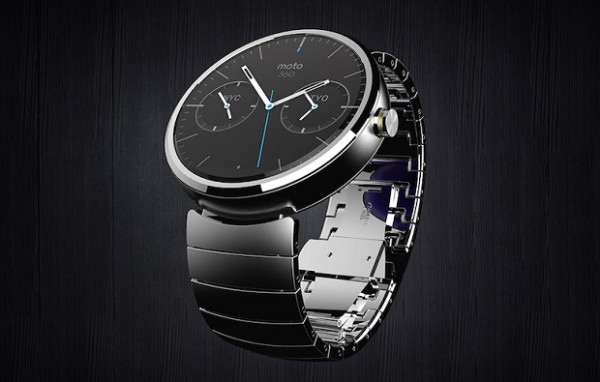
Moto 360, one of the two watches running Android Wear that will be launched this summer, was shrouded in secrecy until now, but thanks to MobileFun, at least we know how much this smartwatch is going to cost.
Google and its partners conceived the two Android Wear smartwatches with different audiences in mind, or at least that’s what the design lead us to believe. LG G watch comes in a rectangular shape, being more similar in design to Pebble, Galaxy Gear and Sony’s smartwatch (among many others), while Moto 360 maintains the classic lines of conventional watches. Both of them will sport never-seen-before features, as far as wearables are concerned, but Motorola’s device seems to be for the ones who aren’t just ready to give up on wristwatches with round cases.
MobileFun mentioned in a blog post on its UK site some of the features Moto 360 will come with. First of all, this wearable will be able to tell the time (fact that’s definitely unexpected, this being a watch), besides displaying notifications. It will also act as a fitness and sleep tracker. In terms of design, Moto 360 will be quite customizable, and there will be plenty of watch faces and wrist wraps available. Google Now will provide voice control and feedback on this smartwatch, and the only thing left to ask would be the ability to use it without having it connected to a smartphone.
As far as the price is concerned, MobileFun stated that Moto 360 will cost £199, the equivalent of roughly $279, which is lower than previously estimated. As smartwatch prices go, this is a bit on the expensive side of things, since even Pebble Steel is $220, as of yesterday. Still, Moto 360 can’t really be compared to Pebble, as it will sport more functions, and will most probably be compatible with more apps. If the battery life is at least decent, we might have in Moto 360 the winner of the smartwatch wars.
MobileFun is already taking pre-orders for the device, even though the device is not expected to be launch earlier than June 25, when the search giant will host the Google I/O conference. Until then, we can only speculate what the other specs of this smartwatch are.
Be social! Follow Walyou on Facebook and Twitter, and read more related stories about Microsoft’s smartwatch, which will also work with iOS and Android devices, and the rumors about Microsoft porting Android apps to Windows Phone.
Kairos Aims to Create Best Smart Mechanical Watch
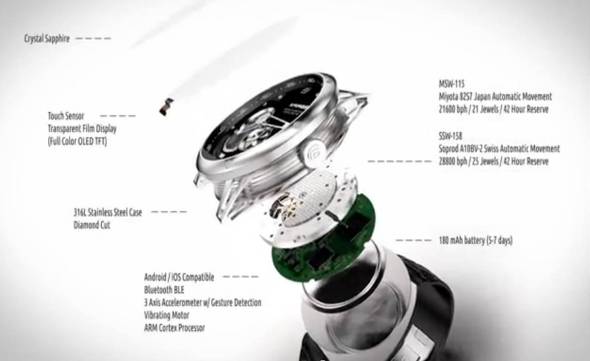
As the popularity of wearables grows, there are still some gaps in current models. A new startup seeks to add the missing ingredient to smartwatches.
It seems like a new smartwatch is announced or rumored every other day. Most of these watches are all over the spectrum, from powerhouse computing on your wrist, to minimalist functionality. All smart watches up to this point fail to provide a substitute for the most basic function of any watch: to tell the time without a regular charge.
This paradox puts most wearables in an awkward place. A watch is first and foremost a time telling device. If the battery on your smartwatch dies, it’s just an ugly bracelet. The only reason to wear a smartwatch is for the functionality. There has yet to be a smartwatch design that doesn’t sacrifice fashion for size and features.
That’s where Kairos comes in. Kairos is a new startup that aims to close the canyon between mechanical and smart varieties of watches. The Kairos smartwatch appears to be modern, reasonably fashionable–albeit, a little thick–mechanical watch, but hidden in the watchface is a transparent OLED display that lights up to provide the “smart” watch features when relevant
This design would be the penultimate of all smartwatches that have been announced yet, but it is important to note that all releases thus far are merely renders. There is no functioning prototype to speak of, yet Kairos is taking non-refundable pre-orders for various models ranging from $499 to $1,199. I, for one, will wait until I can get some hands on time, because the promise of this watch appears too good to be true, which likely means it is.
Kairos is attempting to produce a product that will contain the best of both worlds in its two halves, mechanical and smart. It’s important to note that this is its first watch model of any type. Kairos doesn’t have a smart watch or a mechanical watch currently on the market, so the ambition to produce a device that is on par with existing smart watches and mechanical watches may be a bit of a reach. It would be one thing if this was a partnership with Citizen, Swatch, or Timex, but this is an independent venture, so it wouldn’t be surprising for this first foray to provide a product that is really the worst of both worlds.
However, Kairos may produce a surprise product when the watch is released this coming December. At the very least, it serves as a great proof of concept. Even if the device is unusable, somebody had to be the first to market and an improvement on the design will likely be out sometime in the next couple of years.
Source: The Verge
Be social! Follow Walyou on Facebook and Twitter
Read more on Walyou, Startup Technology Could Extend Wearable Battery to a Month, The Quantified and Augmented Self
Startup Technology Could Extend Wearable Battery to a Month
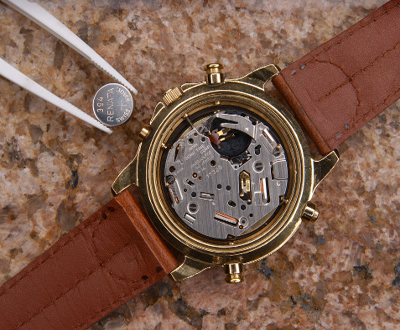
Portable technology keeps getting smaller, but battery life often suffers. A new microprocessor from Ineda Systems could change that trend completely.
One major focus for technology the past decade or so has been miniaturization and battery life. We’ve seen the trend extend from laptops, to smartphones, to tablets, to wearables. Making technology portable is great, but it needs to be big enough to have a battery that will store enough power to last more than just a few hours.
Battery life has been one of the biggest struggle of the wearable. While the time it takes to deplete a full charge for most devices is just as much–if not more–than the average smartphone, that may not be enough for many, since a smartwatch is being compared to it’s predacessor–actual watches–which could go years without being charged.
As a result, many of the people that buy smartwatches only wear them for a short time. The added hassle of remembering to charge a device that replaces the watch–which is historically amongst the most reliable technology ever invented–results in most people discontinuing use in the first six months or less.
That’s where Ineda Systems comes in. The 3 year old startup claims to have developed a microprocessor specifically for wearables that lowers power consumption so much that devices using it can last as long as 30 days. That type of battery life could go a long way towards encouraging mainstream adoption and continued use of wearables.
Peoduct deals should be anounced in the next 3-6 months. The company’s board has strong ties to Samsung and Motorola, which in turn are both also hardware partners for Google Wear, which also launches this summer, so such a technology couldn’t come at a better time.
Ineda Systems hardware is already in customer trials, so it’s possible it will be in the first generation of Android Wear devices, such as the Moto 360, but we won’t know for sure until we get a full spec list for that equipment.
It isn’t specified if the same technology can be adopted by smartphones or other computing devices, but advancements in battery life such as the ones being made by Ineda Systems will no doubt spur additional innovation and improvement for anything that uses a battery.
Source: re/code
Be social! Follow Walyou on Facebook and Twitter
Read more on Walyou, Google Might Become Your New Favorite Carrier,The Quantified and Augmented Self


